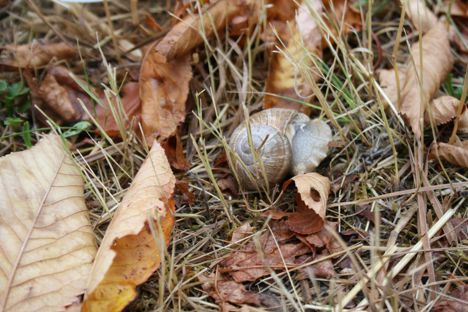
Preparing escargots the slow way
Passionate food-lover and TV Executive Antonia Lloyd tackles the culinary challenge of preparing escargots, or snails, while on holiday in Burgundy. Armed with a recipe book and enthusiastic children, she describes foraging and cooking these gastronomic delights.
Preparing escargots the slow way
Passionate food-lover and TV Executive Antonia Lloyd tackles the culinary challenge of preparing escargots, or snails, while on holiday in Burgundy. Armed with a recipe book and enthusiastic children, she describes foraging and cooking these gastronomic delights.
The escargots from Burgundy are the most gastronomically prized in the snail world. The largest and rarest, maturing only after 3 years, they stand head and shell above the run-of-the-mill petit gris. While the common petit gris thrives in captivity, the burgundy or roman snail, first prepared by the Romans as an early grilled canapé to be enjoyed with wine, cannot. They are difficult to rear and remain a delicacy only to be hand-picked in the wild at certain times of the year, under French law.
Over the summer holidays my family and I were fortunate enough to stay in Saône-et-Loire, Burgundy’s most southern department. By even greater luck our August visit fell outside of the reproductive period protected under the 1979 French law (1st April- 30th June). As an avid fan of the region’s garlic butter à la bourginonne snails, only one path lay ahead: forage for the most succulent molluscs in our back garden and truly prepare them from scratch. Yes, from scratch, even if five days of hard work lay ahead, this was our chance to test out their true gastronomic credentials.
Working from a rather enticing recipe of Michel Roux Jr’s whose legendary family incidentally hails from Burgundy, the five day preparation process was stalled by the third hottest summer on record since 1900. With the elusive escargots shy in sunshine but roaming in rain, we had to wait a fortnight for the heavens to open before my snail devotee daughters and I could set out to unearth the juiciest 4.5cm long of the 2015 crop (under 3cm and they are also protected under French law). Our eyes lit up at the sight of one gros escargot after another – their whitish grey flesh falling out from under their tawny yellow and brown streaked shells, they flaunted their future succulence at us in the most flirtatious way. While my husband looked on in horror, despite his very respectable history of gorging on the garlicy prepared gastropods, my 5- and 7-year old daughters flinched not as they stealthily prized and lifted them off grasses and verge. Despite all our efforts, raiding the hectare left us with a rather smaller crop than we’d imagined – an entrée of eight that left us very short of the gluttonous dozen we’d hoped for.
With the fun over, now the hard part was to begin; starting with starving our select team of eight in containers punched with holes for two days. Larousse suggests up to ten days to purge them of poisonous leaves but Michel’s two day ordeal was quite enough for us. Ensuring the snails had enough air to breathe, we checked them after one day and they were all excreting little snake like black deposits with great panache. Little did I know that disaster was round the corner as my daughters unbeknownst to me had double checked them again leaving one of the lids a little loose. Never underestimate a French snail, particularly a proud Burgundian one. A trio banded together overnight in the spirit of liberté, egalité and fraternité, and successfully busted out of their bastille to flee to the pastures. Whilst my husband glorified the revolutionary runaways, the stark reality was we were now down to five. Ordering a half dozen or a dozen had seemed so easy. Now we were fighting to keep hold of a small starter that had yet to be shared out.
On day three, we carefully placed the purified snails with feelers moving and signs of life in a clean bucket and covered them with coarse salt. This final nail in the coffin for these little critters was not unaccompanied by a twang of remorse but now so unbearably close to the garlic butter stage we pressed on. After four days, it was finally time to wash our five prized molluscs and simmer them whole in a fragrant bouillon for 2 hours before the final assault: pulling out the fleshy snail and removing the digestive tract (the black cloaca at the end of the tail but keeping the mantle where the iron rich liver resides.) On the fifth day we finally prepared the most perfect of butters to befit our travails – with minced garlic, parsley and shallot in abundance, we placed our snails back in their clean shells stuffed with green and let the oven do the rest. Our select party declared them far superior to any shop-bought or restaurant snail eaten thus far – herbaceous, woody, delicate, more sumptuous than ever before, Michel’s recipe had been worth the long, slow wait.

